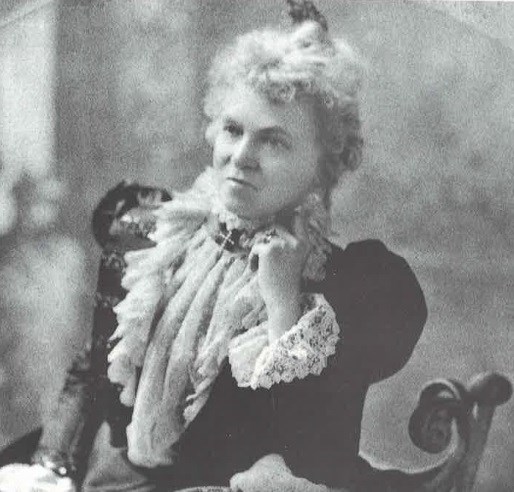Last updated: August 30, 2020
Article
Ellen Powell Thompson

NPS
Explorer and Botanist
Ellen was born to a middle class family in Ohio that produced many explorers; namely her brother John Wesley Powell, the famous southwestern explorer who charted the Colorado River and more. Ellen attended Wheaton College and studied botany, later marrying cartographer and geographer Almon Thompson. In 1871, J.W. Powell asked Ellen's husband to lead a charting expedition through the only unmapped area in the lower 48 states. The trip would zig zag across the Utah - Arizona border and eventually lead the group through the Waterpocket Fold and what is now Capitol Reef National Park. Ellen joined the expedition as a botonist and was the only woman on the crew.
Often covering 20 miles a day over rugged terrain, Ellen rode her horse astride and wore what was considered to be men's clothing. Ellen collected and documented over 200 varieties of plants while a member of the expedition. She sent her samples to botanist Asa Gray at Harvard University. He catalogued them there and some of her samples are still in the Gray Herbarium at Harvard. Of the 200 samples she collected, 3 were unknown to the academic world and all are named for Ellen Powell Thompson; Thompson's Woolly Milkvetch (Astragalus praelongus var. thompsoniae), Thompson's Dalea (Psorothamnus thompsoniae), and Thompson's Penstemon (Penstemon thompsoniae).
Ellen became ill several times on the journey. They were camping and travelling in extreme conditions - sometimes in several feet of snow, other times in desert heat. Toward the end of the expedition, she said "I feel used up. More so than I ever felt in my life." Just before the group reached the Waterpocket Fold, it was decided that Ellen would return to base camp rather than continue on. She was not the only person to drop out of the expedition early as several men also fell ill and left. The expedition began with 11 people, and by the time they arrived at the Waterpocket Fold there were only seven. The group continued through the fold, following Ute and Paiute trails and encountering a band of people collecting seeds. They then summited the Henry Mountains, where Almon named the tallest peak Mt. Ellen, for his wife.
It is unknown how long Ellen continued to collect and document plants after her time with the Thompson Expedition. There is almost no documentation of her activities. In the 1890’s, she did move to Washington D.C. where she became an advocate for women’s suffrage.
